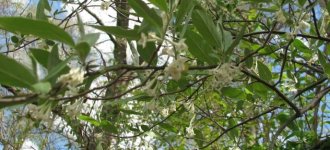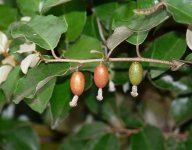cadillactaste
Well-known member
I was admiring a bush near the front entrance of our lake. It is growing in the oddest place. Atop a boulder...so not planted by man.
Then noticed same shrub on property we recently purchased near us. Considering transplanting it...but it says it is invasive. Which does concern me a bit.
Though what intrigues me is that it bares edible fruit! Thought the birds may enjoy that!
Located the name from gardenweb.com...after sharing a photo in "Name that plant" section.
Then noticed same shrub on property we recently purchased near us. Considering transplanting it...but it says it is invasive. Which does concern me a bit.
Though what intrigues me is that it bares edible fruit! Thought the birds may enjoy that!
Located the name from gardenweb.com...after sharing a photo in "Name that plant" section.






